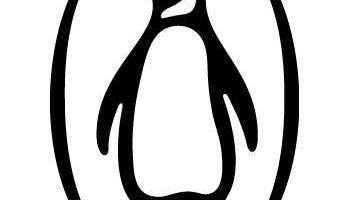Penguin Random House

Penguin Random House and traditional book publishers have been disrupted by e-books and Amazon.com, but have adapted and should be able to survive
The rise of Amazon.com and e-readers forced the demise of many traditional book retailers and disrupted the business model of book publishers. Penguin Random House is an example of a publisher that has adapted it’s business model and scaled into an entity that should be able to survive and co-exist with Amazon.com into the future. That being said, I believe the company is still a loser in the digital revolution, as the relatively cozy oligopoly that used to exist in publishing has been broken up and it had to re-think its entire business model just to survive.
The business model of book publishing before the digital revolution consisted of three steps: discovering content, mass-printing the content in the traditional book format, and finally selling the printed books to distributors. Generally a small number of blockbuster books would be what made a publisher successful, so the ability to identify books with high potential for success was the main way publishers could differentiate themselves. The printing portion and access to distributors served as strong barriers to entry as a significant amount of capital was required to create a printing plant, and distributors would be unlikely to stock their shelves with a book from an unknown publisher.
Technological innovation, specifically the rise of e-readers and Amazon.com has turned this business model on its head. The primary barriers to entry in the publishing industry have either been reduced or eliminated. Amazon.com was obsessed with gaining market share, and would price books at prices so low it would either break even or lose money on each sale. This price pressure made it almost impossible for traditional retailers to compete on price, and many went bankrupt, such as Borders in 2011, which strongly decreased the advantage traditional publishers had with respect to distributor relationships. Barriers with respect to capital requirements were eliminated entirely as publishing books in the e-book format required no physical assets. Online publishers such as Lulu.com were created in droves, and allowed authors to bypass traditional publishers altogether and “self publish”. Additionally, due to demand for e-books, publishers were forced to offer books in both formats. Doing so reduced the total number of print books sold and thus hurt the margins of each book as the fixed costs of their manufacturing asset base was now spread across a fewer number of units.
These factors put a massive strain on publishers, who had enjoyed a comfortable oligopoly for years before technology disrupted their industry. Penguin and Random house merged in an effort to match Amazon’s scale and double down on the value of their combined brands. The combined entity publishes 15,000 new titles a year and sells 800M books a year (across all formats). The scale of the new entity combined with it’s strong ability to identify talent allowed it to survive the disruption, albeit with significantly lower revenues from traditional book sales.
While overall, the net effect of e-books and Amazon has made Penguin Random House a “loser” in the tech revolution, the situation isn’t totally grim. Using an unknown publisher and sticking to the e-book only route can make it very hard for a new book from an unknown author to ever get noticed. The Penguin Randomhouse brand and the companies ability to recognize potentially successful books still allows it to take a significant slice of the value pie in this industry. Their hold on print books, while it is a segment in decline, still gives them an edge over e-book only publishers that can’t offer the highly profitable hard-back books that traditionalists still enjoy to read (consumers like my Dad will often buy a book in both print and e-book versions).



This post makes me wonder if traditional publishers like Penguin can exercise their unique ability to hone and shape successful stories from their initial script stage more effectively to beat Amazon. There’s so much marketing that goes into how a book is crafted, down to the colors and fonts of its cover. Perhaps the way Penguin competes now is by providing a value-added, agency-like service to budding writers or established ones looking to easily advertise their books with the right channel partners and retailers.
Many of the large publishing houses (Penguin Random House included) have started to use digital distribution channels like OverDrive which offer a way to sell digital copies for prices significantly higher than traditional print ($50+) with almost no marginal cost. Has Penguin taken steps to bring these capabilities in house or will these partners start to control more of the channel? It seems like if the publishers can become digital curators they can survive despite the fact that book prices will likely continue to fall.
Thanks for posting! I think the publishing industry is following a similar narrative to the music industry so its been interesting to watch them both adapt to the digital revolution. To continue the comparison, I think the record industry also went through an interim “not yet a loser” phase at which point it was still a stamp of approval or a gatekeeper for “good music.” People trusted the record label’s brand so consumers were more likely to purchase music that had a record label’s stamp of approval. However, with various other channels (youtube) and a proliferation of music blogs, consumers know have some more codified channels through which to discover self recorded music from new artists. The record label’s relevance is, I believe, continuing to wane. I wonder if the same will happen to book discovery, decreasing the Penguin CVP and putting them squarely in the loser camp?